
9120
.pdf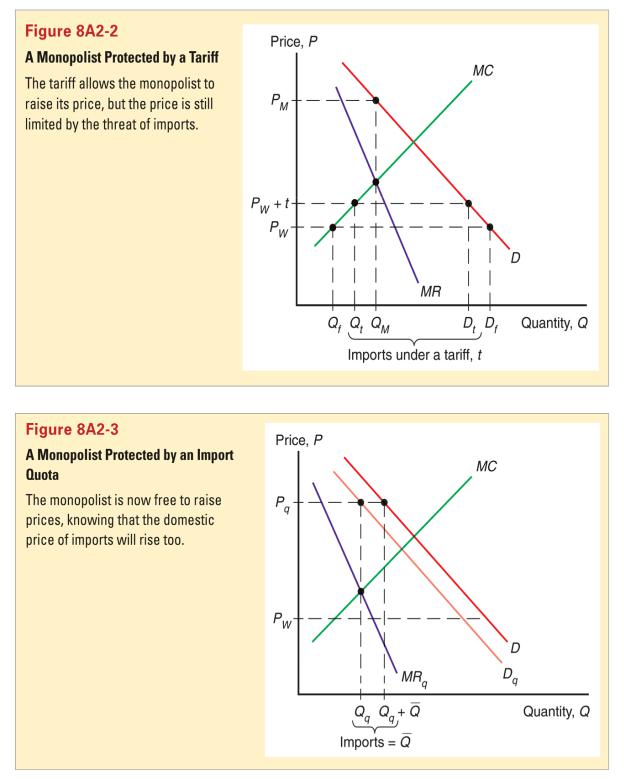
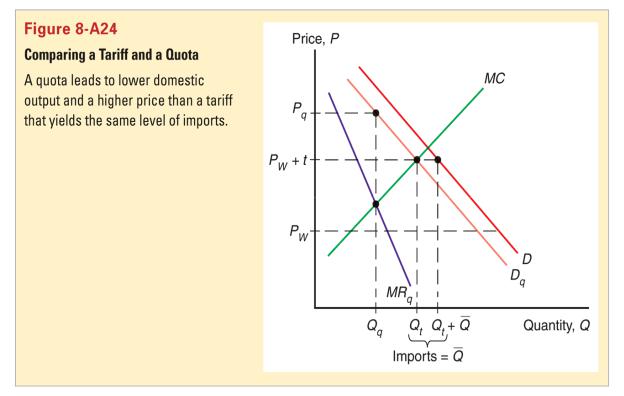
Chapter 9
The Political Economy of Trade Policy
Preview
•The cases for free trade
•The cases against free trade
•Political models of trade policy
•International negotiations of trade policy and the World Trade Organization
The Cases for Free Trade
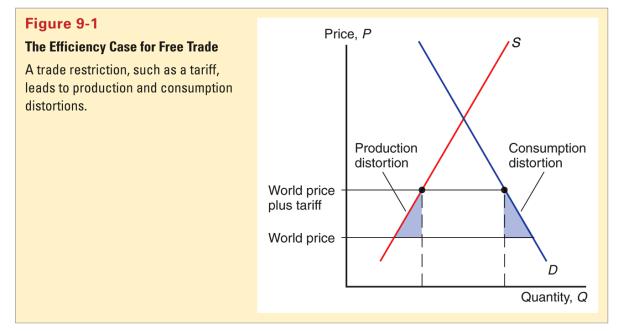
•The first case for free trade is the argument that producers and consumers allocate resources most efficiently when governments do not distort market prices through trade policy.
National welfare of a small country is highest with free trade.
With restricted trade, consumers pay higher prices.
With restricted trade, distorted prices cause overproduction either by existing firms producing more or by more firms entering the industry.
•However, because tariff rates are already low for most countries, estimated benefits of moving to free trade are only a small fraction of national income for most countries.
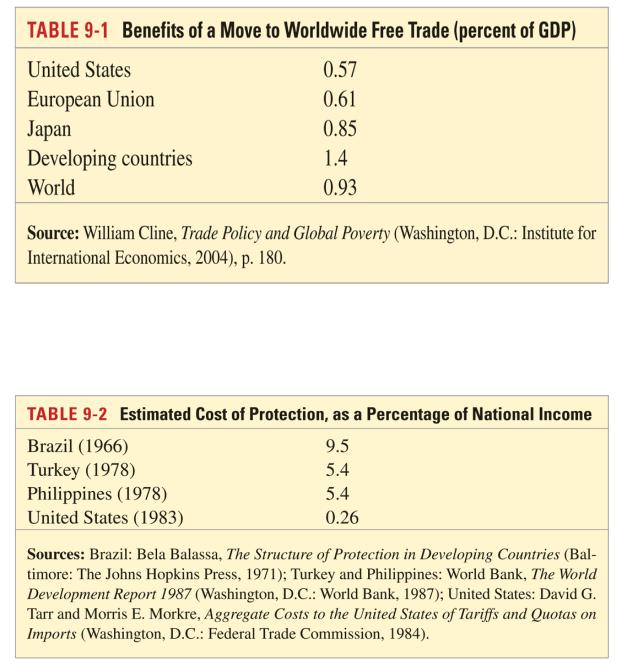
•Yet for some countries in some time periods, the estimated cost of protection was substantial.
•A second argument for free trade is that allows firms or industry to take advantage of economies of scale.
•A third argument for free trade is that it provides competition and opportunities
for innovation.
•These dynamic benefits would not be reflected in static estimates of the elimination of efficiency losses of producers, caused by distorted prices and overproduction.
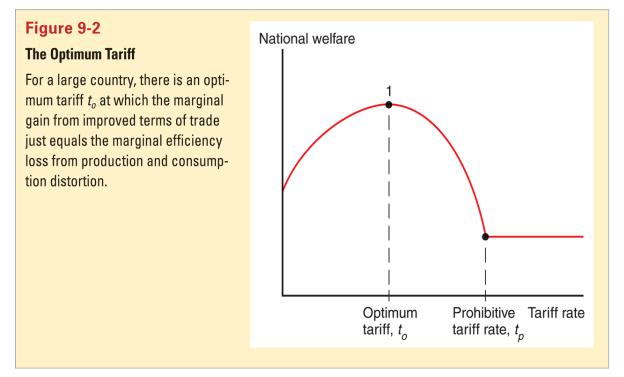
•A fourth argument, called the political argument for free trade, says that free trade is the best feasible political policy, even though there may be better policies in principle.
•Any policy that deviates from free trade would be quickly manipulated by special interests, leading to decreased national welfare.
The Cases Against Free Trade
•For a “large” country, a tariff or quota lowers the price of imports in world markets and generates a terms of trade gain.
This benefit may exceed production and consumption distortions.
•In fact, a small tariff will lead to an increase in national welfare for a large country.
But at some tariff rate, the national welfare will begin to decrease as the economic efficiency loss exceeds the terms of trade gain.
•A tariff rate that completely prohibits imports leaves a country worse off, but tariff rate t0 may exist that maximizes national welfare: an optimum tariff.
•An export tax (a negative export subsidy) that completely prohibits exports leaves a country worse off, but an export tax rate may exist that maximizes national welfare through the terms of trade.
•An export subsidy lowers the terms of trade for a large country; an export tax raises the terms of trade for a large country.
•An export tax may raise the price of exports in the world market, increasing the terms of trade.
Counter-Argument
•For some countries like the US an import tariff or and export tax could improve national welfare at the expense of other countries.
•But this argument ignores the likelihood that other countries may retaliate against large countries by enacting their own trade restrictions.
•A second argument against free trade is that domestic market failures may exist that cause free trade to be a suboptimal policy.
•The economic efficiency loss calculations using consumer and producer surplus assume that markets are functioning efficiently.
•Types of market failures include
•Persistently high under-employment of labor
•Persistently high under-utilization of capital
•Technological benefits for society from additional production that are not captured by individual firms
•Environmental costs for society from additional production that are not paid for by individual firms
•Economists calculate the marginal social benefit to represent the additional benefit to society from additional production.
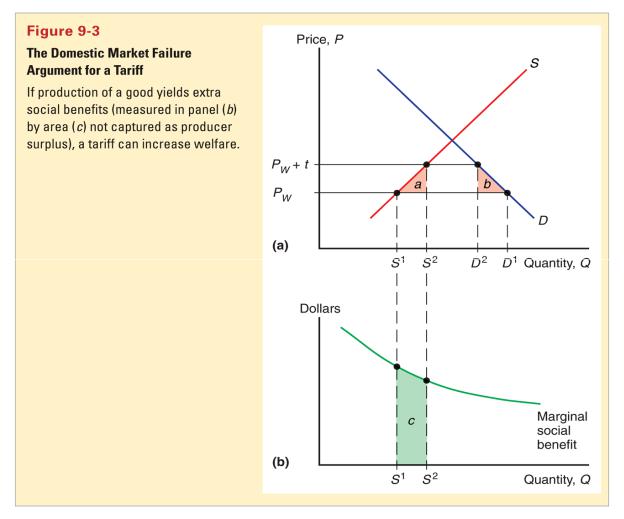
•In each of the market failure cases, marginal social benefit is not accurately measured by the producer surplus of private firms, so that economic efficiency loss calculations are misleading.
•It is possible that a tariff raises domestic production, thereby increasing the benefit to domestic society because a market failure.
•The domestic market failure argument against free trade is an example of a more general argument called the theory of the second best.
•This theory states that government intervention which distorts market incentives in one market may increase national welfare by offsetting the consequences of market failures elsewhere.
The best policy would be to fix the market failures themselves, but if this is not feasible, then government intervention in another market may the “second-best” way of fixing the pro blem.
Counter-Arguments
•Economist supporting free trade counterargue that domestic market failures should be corrected by a “first-best” poli cy: a domestic policy aimed directly at the source of the problem.
If persistently high under-employment of labor is a problem, then the cost of labor or production of labor-intensive products could be subsidized by the government.
These subsidies could avoid the economic efficiency loss for consumers due to a tariff.
•Because it is unclear when and to what degree a market failure exists in the real world, it is unclear when and to what degree government policies should respond.
•Government policies to address market failures are likely to be manipulated by politically powerful groups.
•Because it distorts the incentives of producers and consumers, a trade policy may have unintended consequences that make a situation worse, not better.
Political Models of Trade Policy
•How is trade policy determined?
•Models that address this question:
1.Median voter theorem
2.Collective action
3.A model of trade policy that combines aspects of collective action and the median voter theorem
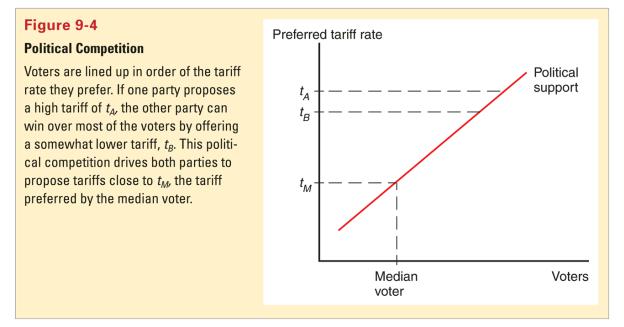
Median Voter Theorem
•The median voter theorem predicts that democratic political parties may change their policies to court the voter in the middle of the ideological spectrum (i.e., the median voter).
•Suppose that this ideological spectrum is defined only by a tariff rate policy.
And suppose that voters can be ranked according to whether they desire high or low tariff rates.
•Assumptions of the model:
There are two competing political parties.
The objective of each party is to get elected by majority vote (not to maintain ideological purity).
•What policies will the parties promise to follow?
Both parties will offer the same tariff policy to court the median voter (the voter in the middle of the spectrum) in order to capture the most votes on either side of the median voter.
•Thus, the median voter theorem implies that a two-party democracy should enact trade policy based on how many voters it pleases.
A policy that inflicts large losses on a few people (importcompeting producers) but benefits a large number of people (consumers) should be enacted into law.
•But trade policy doesn’t seem to follow this prediction.
Collective Action
•Political activity is often described as a collective action problem:
While consumers as a group have an incentive to advocate free trade, each individual consumer has no incentive because his benefit is not large compared to the cost and time required to advocate free trade.
Policies that impose large losses in for society as a whole but small losses on each individual may therefore not face strong opposition.
•However, for those groups who may suffer large losses from free trade (for example, unemployment), each individual in that group has a strong incentive to advocate the policy he desires.
In this case, the cost and time required to advocate restricted trade is small compared to the cost of unemployment.
A Model of Trade Policy
•While politicians may win elections partly because they advocate popular policies as implied by the median voter theorem, they also require funds to run campaigns.
•These funds may especially come from groups who do not have a collective action problem and are willing to advocate a special interest policy.
